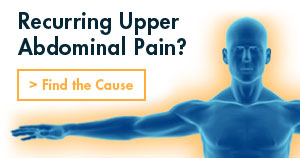Gallstone Causes
There is no one specific reason gallstones form. Research has shown gallstones may result when:
- Your bile contains too much cholesterol
- Your bile contains too much bilirubin
- Your gallbladder doesn’t empty correctly
Women are twice as likely to develop gallstones then men. Other factors believed to attribute to gallstones include:
- Overweight/obesity, especially in women
- Pregnancy
- Rapid weight loss
- Weightloss and regain, especially in men
- Cirrhosis of the liver
- Family history of gallstones
- Diet high in fat and cholesterol and low in fiber
- Age – over 60
- Being of Native American Indian descent
- Type 2 diabetes
- Taking statins – cholesterol lowering drugs
- Hormone Replacement Therapy for women during menopause
Gallstone Symptoms
Most gallstones don’t cause any symptoms, which is known as asymptomatic gallstone disease or “silent stones,” and do not require treatment. However, as gallstones move into the bile ducts and create blockage, pressure increases in the gallbladder and one or more symptoms may occur.
Intense pain occurs when a gallstone blocks a bile duct and is often called a gallbladder “attack” because they occur suddenly. These attacks often follow fatty meals, and they may occur during the night. Symptoms of a typical gallbladder attack may cause:
- Acute onset pain in the right upper abdomen, increasing rapidly lasting from 30 minutes to several hours
- Pain that radiates to the back between the shoulder blades
- Pain under the right shoulder
- Gas or bloating sensation—many patients describe this feeling as needing to “burp”
Biliary colic pain is a steady or intermittent ache in the center of the upper abdomen above the bellybutton to below the breastbone, usually under the right side of the rib cage. Symptoms of biliary colic are usually triggered by the digestive systems demand for bile, especially common after fatty meals. Other symptoms may include:
- Sweating
- Nausea or vomiting
- Pain lasting from a few minutes to more than an hour
Although these attacks often pass as gallstones move, your gallbladder can become infected if a blockage remains. If you experience any of the following symptoms, you should see your doctor immediately:
- Prolonged pain for more than five hours
- Nausea or vomiting
- Low grade fever or chills
- Yellowish color of the skin or whites of the eyes
- Dark urine
- White-colored stools
Learn more about gallbladder diagnosis and treatment by selecting from the options below. Or schedule your appointment today and talk to an expert in gallbladder surgery.



 Causes & Symptoms
Causes & Symptoms

